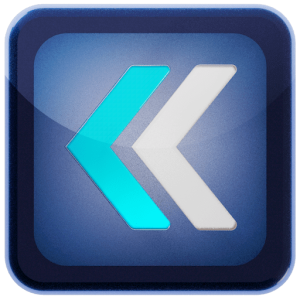
As a mobile marketing agency with some of the largest global brands as clients, it’s safe to say we know our stuff. That may sound cocky, but our expertise didn’t come without multiple failures and learning experiences. In terms of mobile marketing, we know what’s out there and what usually works. To ensure the best marketing outcomes for our clients, we rely on thorough briefs. The brief – which the client fills out, with our assistance – is the starting point, that sets the stage for all of our efforts. It’s the “North Star” that guides us, and gives life to the campaigns we’ll run including key information about the product we’ll be marketing, details about the product’s need, the market, USPs and more. A brief can lead to exceptional results, if done right. If not, it can leave both parties more confused. Read on for our best practices and tips on how to “crack” a brief for best results.
Getting Priorities Right
It’s critical to ensure that you know what you want to achieve from your campaign. It’s fine to have a few campaign objectives, but it’s their order that’s important – especially when it comes to your #1 campaign goal.
For example, if your goal is to increase conversions for downloads from the App Store, then an optimized App Store video is something you’ll be leveraging. If you try to use this video to speak about future in-app purchases at the same time, the focus is lost and neither goal is achieved. Even each creative asset should only have one main goal, and that goal has to be super clear. If there are too many goals for a specific asset or activity, or if the priorities aren’t set and understood by everyone at the beginning, it can lead to issues down the line.
Think Crazy, Wild, Out-of-the-Box
Mobile marketing has many technical limitations. You’ve got app store screenshot sizes of 1125px × 2436px for the iPhone X, or a 16:9 landscape aspect ratio on the Google Play Store, for example. What we often see is that these limitations can get in the way of creative thinking. When working on a brief, we suggest putting everything else aside and playing with crazy ideas. Throw some fantastic thoughts around – go wild! We have long brainstorming sessions with our team to come up with the best ideas. We then bring 2 team members into the room and present them the top 2 ideas that came out of our session. If they can’t “see it” almost instantaneously, then we drop the idea and start from square one, until we hit on the winner. As Canadian director Martin Villeneuve puts it, “Problems are hidden opportunities, and constraints can actually boost creativity”.
Give The Full Story
Working with a marketing agency is a partnership, and in order to achieve the best results, it’s important to give as much relevant information to one another as possible. Things that might seem less relevant for the client – such as the story about how a mobile app came about – might be great material for the marketing agency to work with, and vice versa. This goes for product features, too. The key to original, jaw dropping marketing campaigns is a deep understanding of the product (yes, including any drawbacks), the background, and all other materials necessary to provide context.
Sync on Expectations
In the same spirit of setting clear goals and priorities, it’s important that through the brief, you’re synced on expectations.
We’re not talking about budget expectations, but expectations around concepts and the execution. The marketing agency may come up with crazy original ideas, while you were expecting the standard banner approach, or vice versa. Use the brief to give a clear idea on what approach you’re looking at when it comes to the campaign, but keep an open mind. Sometimes, for example, a “classic” product is best served with a loud campaign. It’s also really important to let your brand guide you, so that there is consistency across your product offering.
Ignore What’s “Normally” Done
A brief starts life as a (more or less) blank canvas, upon which you as the client, together with the marketing agency, weave your magic. It’s therefore highly recommended to ignore what has been done before, any preconceived notions and industry standards, and approach the brief from a fresh perspective. This can lead to some incredible creative thinking from all sides, and create positive outcomes where others have struggled. For example, if within an Instagram story you have to swipe up (instead of clicking on the ad which will just flip it next to the next story), we will try to use animation to make something look like it’s a “swipe up” anyway. It could be a bar that you need to swipe up, it could be something that is running away from you, it could even be a bottle opener that works only when you swipe up. The same goes for playing with transparent backgrounds and not using the whole ad space, to make something pop and catch the user’s attention. All of this comes from fresh thinking and ignoring the conventional approach. When filling out the brief, keep all options open, keep an open mind, and forget “normal”. This is example for a logo that we needed to “pop-up” and grab more attention in the store: 
Using a Brief to Achieve Top-Notch Results
The brief at the start of the campaign is the foundation upon which everything else is leveraged. More often than not, a great brief leads to a great campaign, where all goals are achieved. In our experience, the process of completing the brief has also turned out to be tremendously valuable for the client; you need to be super focussed on what sets you apart, where your strengths and weaknesses lie, what your priorities are, and what you’re hoping to achieve. It may seem daunting at first, but it can help to nail that brief and achieve above and beyond what you imagined.







